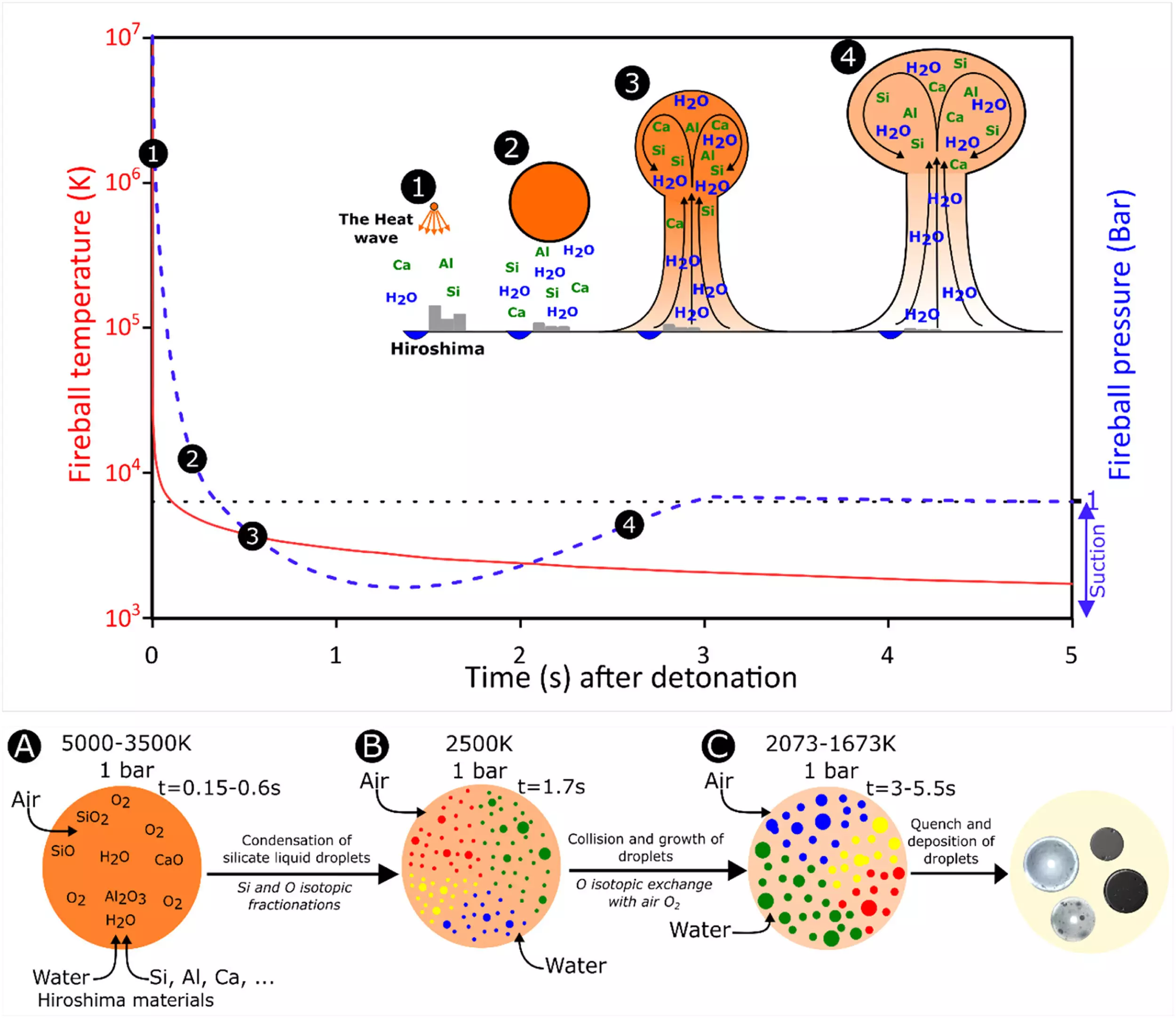The atomic bombing of Hiroshima, Japan, by the United States in August 1945 left a lasting impact on the city and its residents. The devastation caused by the bomb not only resulted in the deaths of hundreds of thousands of people, but it also had long-standing effects, including an elevated incidence of cancer due to radiation exposure. Recent research on Hiroshima Bay has uncovered a new type of debris from the fallout, known as Hiroshima glasses. These glasses formed from vaporized materials of the bomb and the surrounding landscape and infrastructure.
A study published in Earth and Planetary Science Letters analyzed the chemical and isotopic compositions of these glasses to better understand their formation process during the nuclear event. The research, led by Nathan Asset from Université Paris Cité, France, identified four types of glasses within the 94 specimens of fallout debris: melilitic, anorthositic, soda-lime, and silica. Each type of glass had unique characteristics and compositions, reflecting the diverse materials vaporized during the explosion.
The researchers determined that rapid condensation within the nuclear fireball, occurring within a timeframe of 1.5 to 5.5 seconds and at temperatures ranging from 3,200 to 1,000 Kelvin, was the primary process leading to the formation of Hiroshima glasses. This process is similar to the formation of calcium-aluminum-rich inclusions (CAIs) in primitive meteorites, which originated from the vaporization of interstellar dust and nebula gas. Understanding the formation process of these glasses provides valuable insights into the events that took place during the atomic bombing.
The study revealed that the plasma fireball that exploded above the city had a radius of 260 meters and a peak temperature of 107 K, causing immense destruction within seconds. Materials such as concrete, iron, aluminum alloys, industrial glass, and soil were vaporized and mixed with sand, river water, and the atmosphere to create the various types of glasses found in the fallout debris. The varying compositions of the glasses reflect the different materials that were present at the time of the explosion.
Analysis of the isotopic composition of silica within the Hiroshima glasses revealed values that were consistent with the composition of CAIs. The research team used the isotopic fractionation results to determine the sequence in which the glasses formed, with melilitic glasses being the first to form, followed by anorthositic, soda-lime, and pure silica glasses. While the environment and conditions of Hiroshima glass formation differed from those of CAIs, the study provides valuable information on the gas-solid transition processes that occurred during the nuclear event.
The analysis of Hiroshima glasses provides important insights into the events that occurred during the atomic bombing of Hiroshima in 1945. By studying the chemical and isotopic compositions of the fallout debris, researchers can reconstruct the formation process of these glasses and understand the impact of the nuclear event on the surrounding environment. The findings of this study contribute to our knowledge of the origins of our solar system and the processes that have shaped our planet since its formation.



Leave a Reply